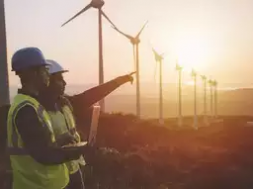
Copper Supply Deficit Will Last till 2030 with Unstable Output in Chile and Peru – EQ Mag
Although Elon Musk said the world doesn’t need extra copper on Twitter in January, most experts believe that the world is facing a copper shortage amid increasingly challenging supply streams in South America and pressure from higher demand. The copper deficit in 2023 will be a severe problem in the coming decade. As the element is seen as a leading economic indicator, its shortage could be a sign of more stubborn inflation in the future.
According to the U.S. Geological Survey (USGS), profitable copper reserves are estimated to be 870 million tons globally, with annual demand amounting to 28 million tons. As unknown copper reserves on Earth could probably exceed 5 billion tons along with the capacity of copper recycling, the agency believes that the world is extremely unlikely to run out of copper.
That being said, Robin Griffin, vice president of metals and mining at Wood Mackenzie, believes that copper supply will continue to fall short of demand amid unrest in Peru and higher copper demand from the energy transition industry. The UK-based consulting firm estimates severe copper shortages to persist until 2030, where a severe deficit of 10 million tons is likely.
Chile and Peru are the top two copper producers, accounting for 37% of global copper supply. However, Peru—responsible for 10% of global production—has been struck by massive demonstrations following the ousted of its former president in December last year. On January 20, multinational mining company Glencore suspended operations in Peru after protesters looted and set fire to its Antapaccay copper mine.
Despite its largest share with 27% of total copper production worldwide, Chile saw a 5.3% drop in annual output to 5.3275 million tons, the lowest level since 2011. The noticeable decline was mainly attributed to lower ore grades (the concentration of the desired metal in an orebody), water restrictions and protests from unions and local residents. Goldman Sachs predicts that Chile will likely produce less copper between 2023 and 2025.
However, the demand for copper has been high and even soared following China’s reopening along with growth in the vehicle and energy transformation sectors. Analysts from CMC Markets project copper prices to double in 2024–2025.
Copper is essential to electricity-related technologies and energy transformation. Particularly, the EV market has the highest demand for the red metal. An EV alone requires 2.5 times as much copper as a fossil fuel vehicle. The International Energy Agency (IEA) reported that sales of EVs increased more than twofold in 2021, boosting the total number of EVs globally to around 16.50 million. As EVs will go mainstream in the future, corresponding charging systems will need more copper, too.
Edward Moya, senior market analyst at New York-based OANDA, also said that Peru and Chile have been largely frustrated by low-grade ores, strikes, and water restrictions, which might threaten copper supply in the coming years. By contrast, copper prices are expected to soar due to strong demand in 2022 and (possibly) rapid economic recoveries in China after its reopening.
With a different opinion, some analysts believe that China’s economic returns will not considerably stimulate the demand for copper. Nevertheless, the metal is definitely a fundamental basis for electricity-related technologies, with its demand mostly from widespread electrification. The market is also expecting the decreases in copper supply to fuel global inflation, for which central banks worldwide will adopt tougher actions.

















